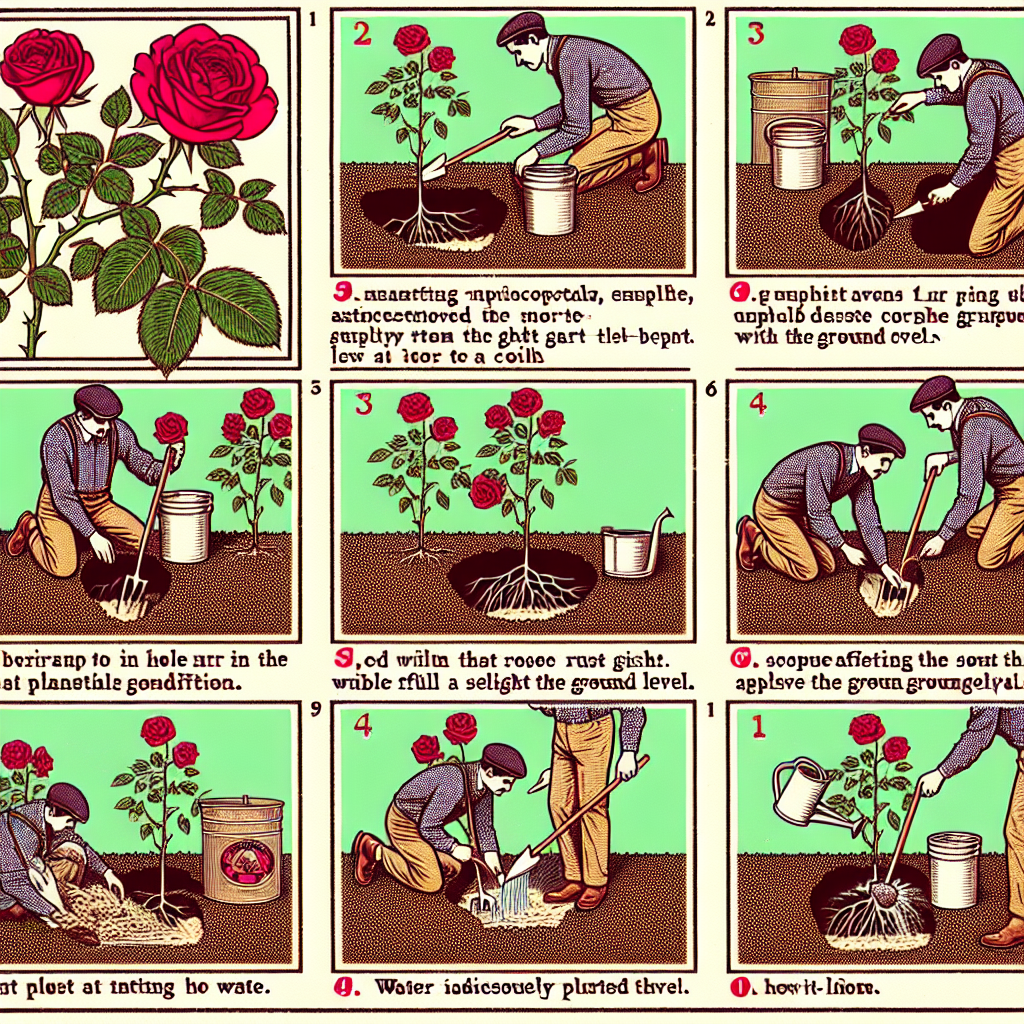
Jackson and perkins how to plant roses
Jackson and Perkins: How to Plant Roses for Stunning Blooms
Growing roses can be a rewarding endeavor for any gardener. Known as the “queen of flowers,” roses are cherished for their beauty and fragrance. If you’re looking to craft a perfect garden filled with these stunning blooms, understanding the fundamentals of planting roses is essential. In this guide, we’ll delve into the various techniques, tips, and considerations for successfully planting roses, particularly with insights derived from Jackson and Perkins.
The Importance of Choosing the Right Variety
Before you get your hands dirty, selecting the right variety is crucial. With a wide range of options available, here are some popular rose types to consider:
- Hybrid Tea Roses: Known for their large, classic blooms, ideal for cutting and bouquets.
- Floribunda Roses: These bloom in clusters, providing a continuous display of color.
- Climbing Roses: Perfect for trellises or walls, they add vertical interest to your garden.
- David Austin Roses: Renowned for their unique shapes and fragrances.
Choosing the right variety depends on your garden's climate, soil, and intended use for the roses. Visit local nurseries or browse through Jackson and Perkins for expert recommendations specific to your region.
Preparing Your Garden for Planting
Once you've selected your roses, you need to prepare the garden bed. Proper preparation will ensure that your roses thrive and produce beautifully. Here’s how to do it step by step:
- Choose the Right Location: Roses thrive in sunny spots. Select a location that receives at least 6-8 hours of direct sunlight daily.
- Test Your Soil: Conduct a soil test to check pH levels (ideally between 6.0 and 6.8) and nutrient content.
- Till and Amend the Soil: Work the soil to a depth of at least 12 inches and amend with compost or well-rotted manure to improve drainage and nutrient levels.
- Clear the Area: Remove all weeds and debris to give your roses a clean start.
How to Plant Roses
Now comes the exciting part—planting your roses! Below are the essential steps for planting roses effectively:
- Dig the Hole: Make a hole that is at least twice as wide and deep as the root ball of the rose. This allows for proper root growth.
- Prepare the Rose: If your rose is in a container, gently remove it and loosen the roots. If it’s bare-root, soak the roots in water for a few hours before planting.
- Position the Rose: Place the rose in the center of the hole. Ensure that the graft union (where the rootstock meets the stem) is level with or slightly above the soil surface.
- Backfill the Hole: Fill the hole with soil, mixing in some compost. Be sure to eliminate any air pockets by watering the base as you fill.
- Water Generously: After planting, give your roses a thorough watering to help settle the soil around the roots.
- Add Mulch: Apply a 2-3 inch layer of mulch around the base to retain moisture and suppress weeds.
Post-Planting Care for Roses
With the roses planted, your care continues! Maintaining your new plants is critical for their health and blooming capability. Here are some key care tips:
- Watering: Water deeply but infrequently to encourage strong root growth.
- Fertilizing: Use a balanced fertilizer, starting a few weeks after planting and continuing throughout the growing season.
- Pruning: Prune in early spring to remove dead or crossing branches, which encourages healthy growth.
- Pest and Disease Management: Keep an eye out for common pests such as aphids and diseases like powdery mildew, and take appropriate measures.
Choosing the Right Time to Plant
The timing of when you plant roses plays a significant role in their establishment and early growth. The ideal time to plant roses is typically:
- Early Spring: As the ground begins to thaw and temperatures are consistently above freezing.
- Fall: In many climates, planting in early fall allows roses to establish roots before winter.
Common Mistakes to Avoid When Planting Roses
Even seasoned gardeners can fall prey to common mistakes when planting roses. Awareness of these pitfalls can help ensure success. Here are frequent errors to avoid:
- Overwatering: Roses need consistent moisture but not soggy soil.
- Improper Depth: Planting too deep or too shallow can inhibit growth.
- Ignoring Sunlight Needs: Insufficient light can result in weak plants with fewer blooms.
- Neglecting Spacing: Crowding your roses can promote diseases and restrict their growth.
Conclusion: Embrace the Beauty of Roses
With a dash of care, attention, and the right techniques, your garden can flourish with roses that will not only beautify your space but also provide joyful moments of appreciation throughout their blooming season. Remember, Jackson and Perkins can be an excellent resource for more information on rose care, varieties, and tips tailored to your gardening needs.
By following this comprehensive guide on Jackson and Perkins: How to plant roses, you’re well on your way to cultivating a magnificent display of roses. With patience and dedication, your efforts will soon be rewarded with a garden that bursts into a kaleidoscope of colors and delightful fragrances.
By Guest, Published on August 20th, 2024